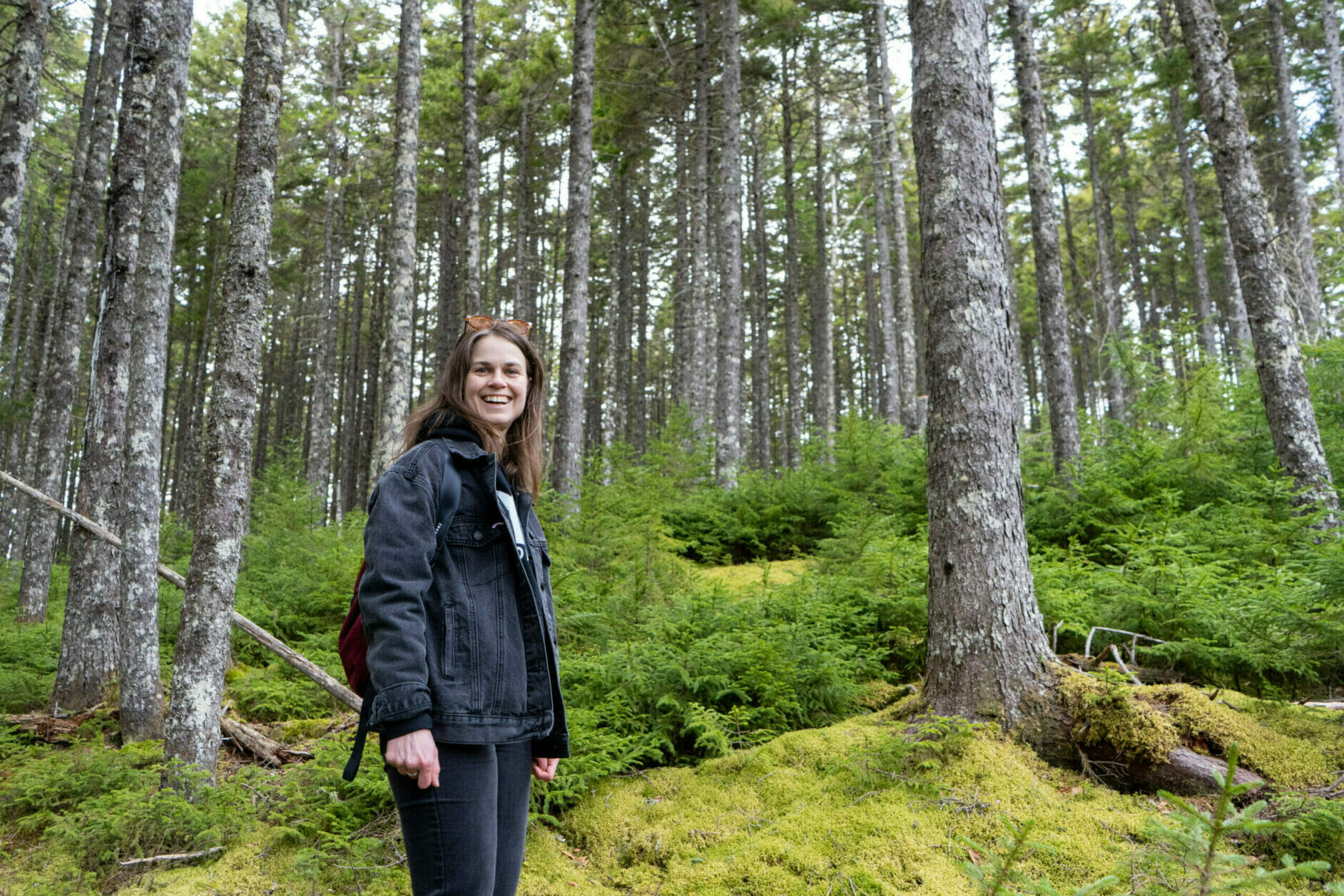What does conservation mean for us?
By Rebecca Jacobs, Posted on August 20, 2022
What do we mean when we talk about forest conservation? At Community Forests International, our approach has always been to put community and climate at the forefront.
Community: building relations for solutions.
While the well-being of all communities is at the core of our work, we increasingly aim to centre those most impacted by the climate crisis. That is why we humbly strive to put Indigenous communities at the centre of our conservation efforts in Canada, including building partnerships for land co-management, land-based education, and sharing the histories and ongoing Indigenous stories of the land.
Conservation has for too long been used as a tool of colonialism—but we know that it can also be used to support reconciliation.
On Turtle Island, the forests we care for are located on unsurrendered Wolastoqiyik, Mi’kmaq, and Peskotomuhkati lands. By centring Indigenous-led forest management and practices, we recognize how the diverse Nations and communities of these lands have lived on and with the land for thousands of years. This growing movement is vital—most significantly for justice and reconciliation, but also for the forests of the Wabanaki.

We invite you, as a member of our community, to join us in the journey towards land-based reconciliation as we find our common ground within the forest.
Climate: growing resilient future forests.
Research shows that the Wabanaki forest is losing its unique composition and undergoing a process of “Borealization” as a result of widespread intensive forest management favouring single-aged, softwood-dominated forests. Decades, if not centuries, of such forest management have yielded a forested landscape that is patchy, relatively young, and suffers from a lack of diversity and complex habitats.
This degraded forest can lack the ability to securely sequester carbon, and are more vulnerable to insect attacks, drought stress, and other disturbances that cause them to degrade even more rapidly in the face of a changing climate.
But we know it doesn’t have to be this way. Climate-focused forestry is a growing approach to forest management that helps forests adapt to changing climate conditions, while also increasing carbon sequestration and carbon storage. So, what does that look like on the ground?
When we conserve a forest, our Forest Team conducts surveys to assess the diversity and climate resilience of the forestland. They then prescribe management strategies to boost the forest’s resilience over time and provide maximum climate benefits. Of course, supporting a climate-resilient forest has many other benefits, including increasing the diversity of wildlife that call those forests home! Specifically, in the Wabanaki forest, this means undertaking various interventions at the stand level to favour the survival and proliferation of those temperate species that are predicted to be resilient to the changing climate.

Supporting a climate-resilient forest has many other benefits, including increasing the diversity of wildlife that call those forests home! Photo taken by Nate Gaffney in the Robinson Forest on land protected by Community Forests International since 2018.
With our community behind us, we know the Wabanaki forest can become one of our greatest nature-based climate solutions.
